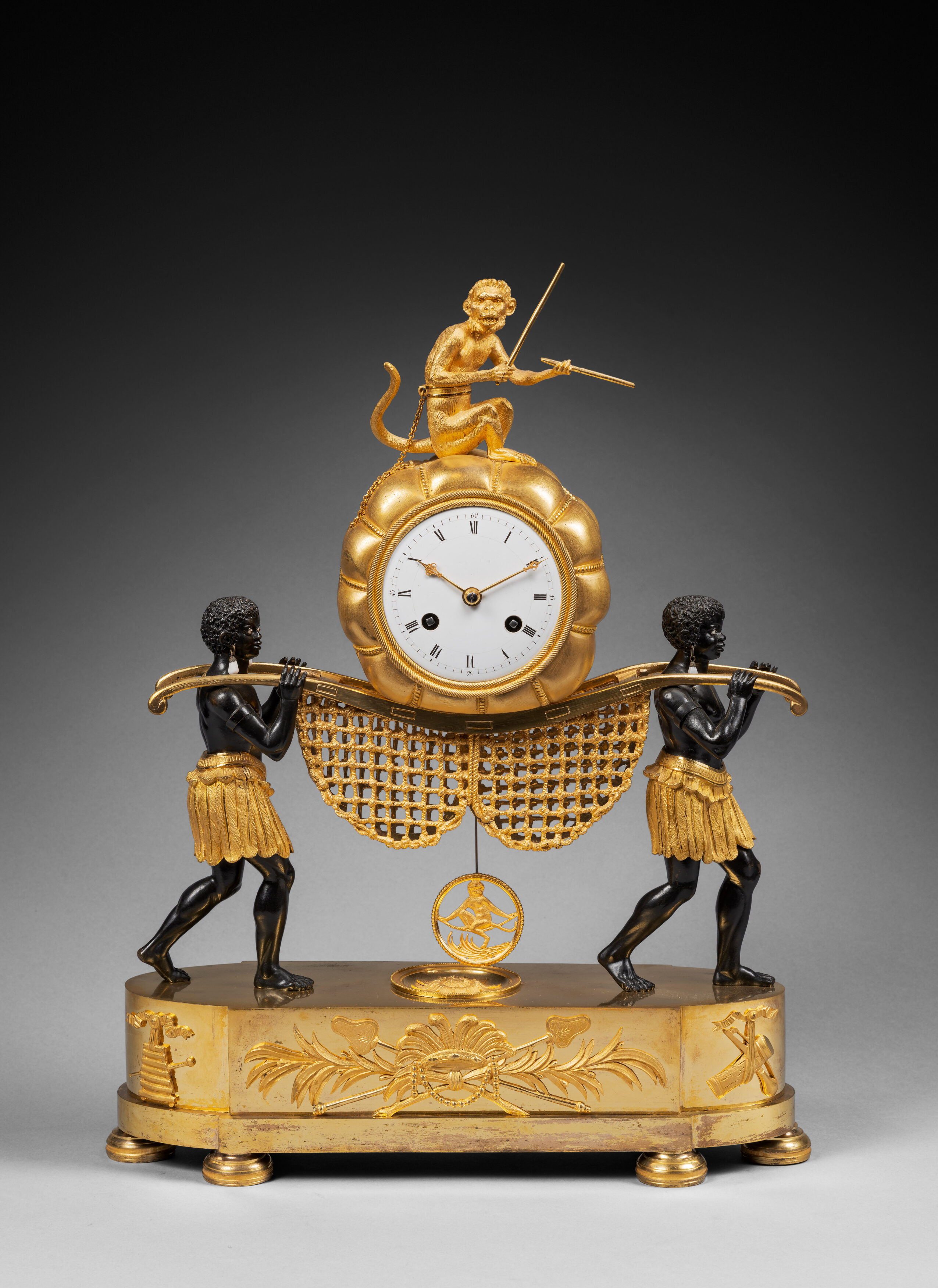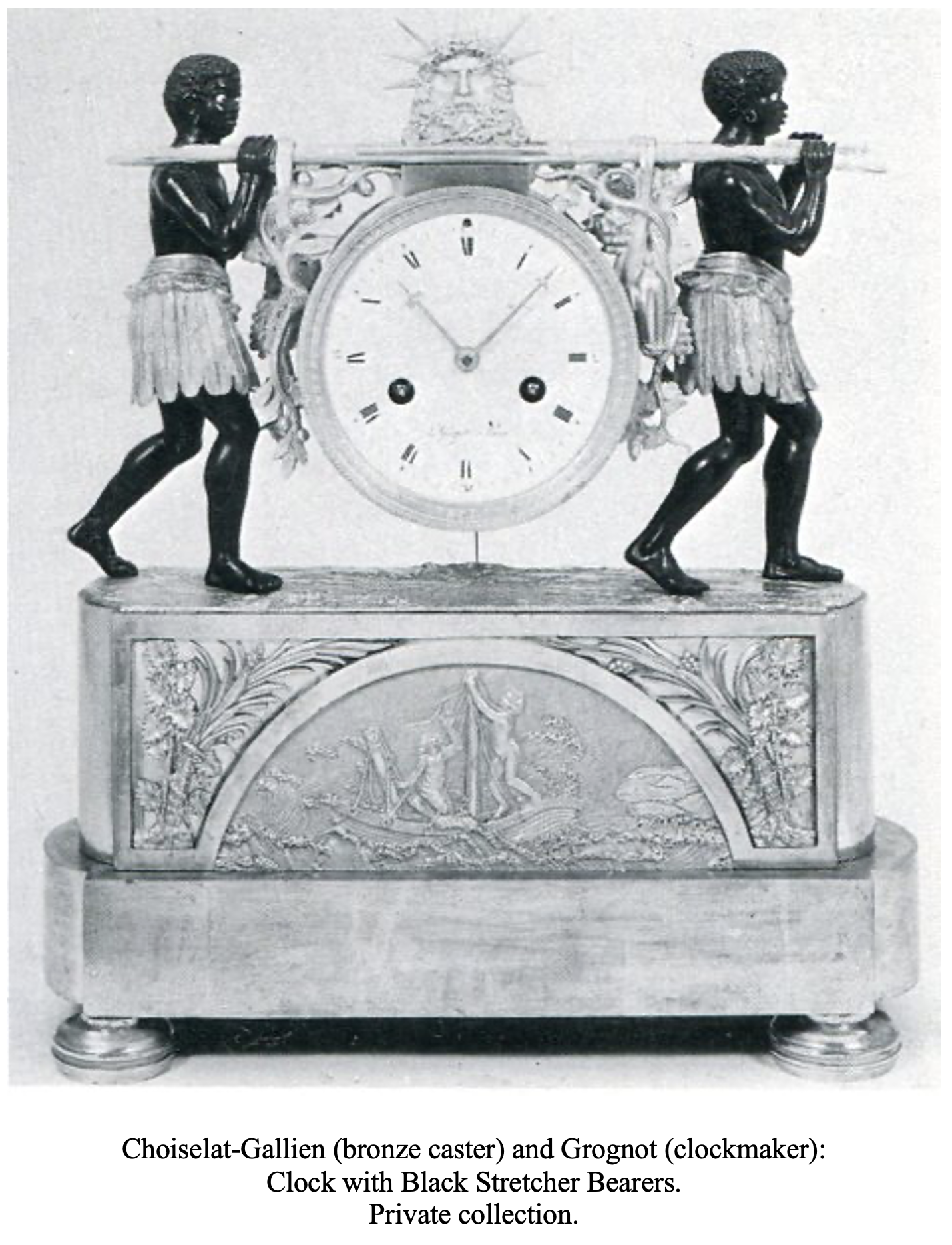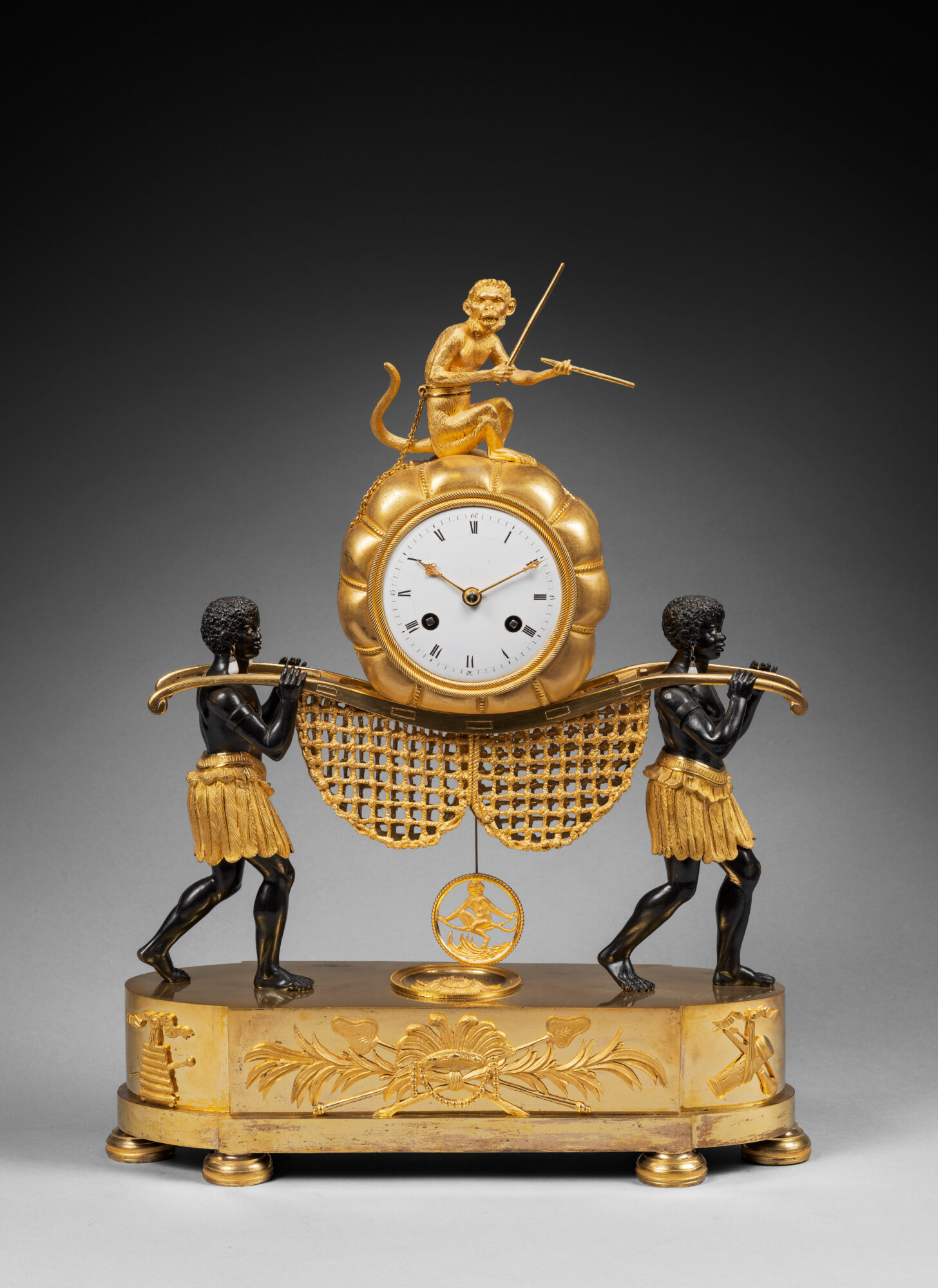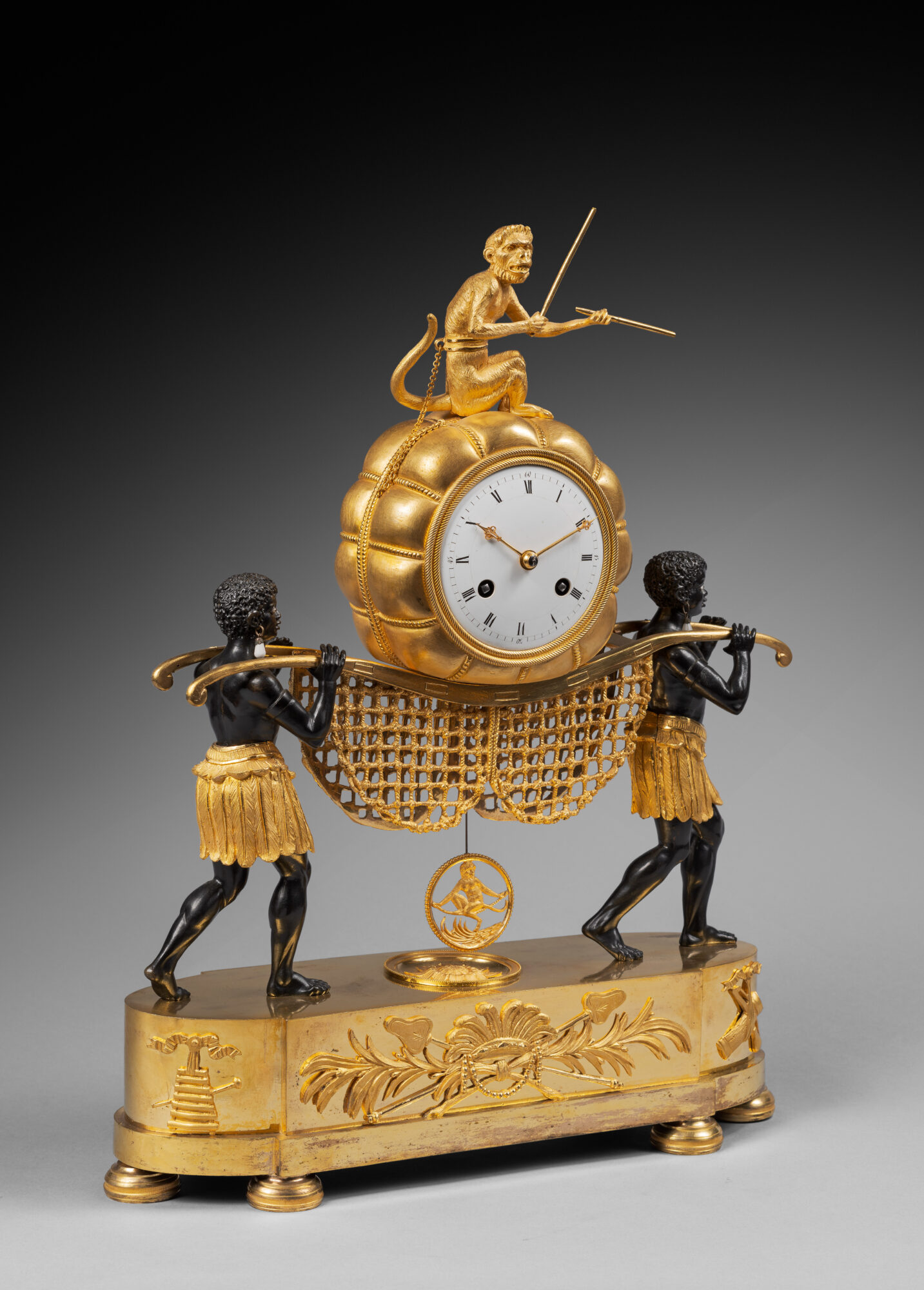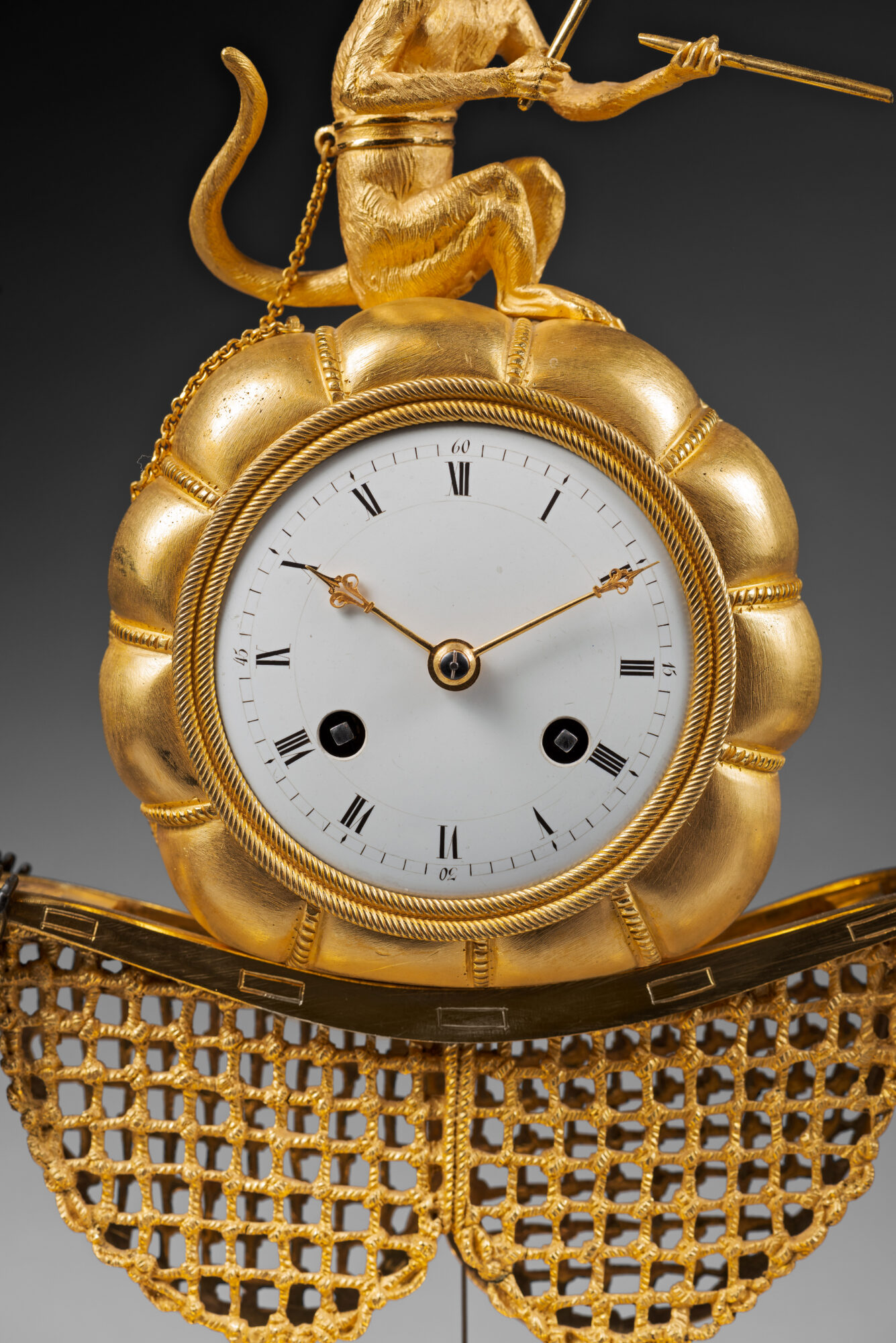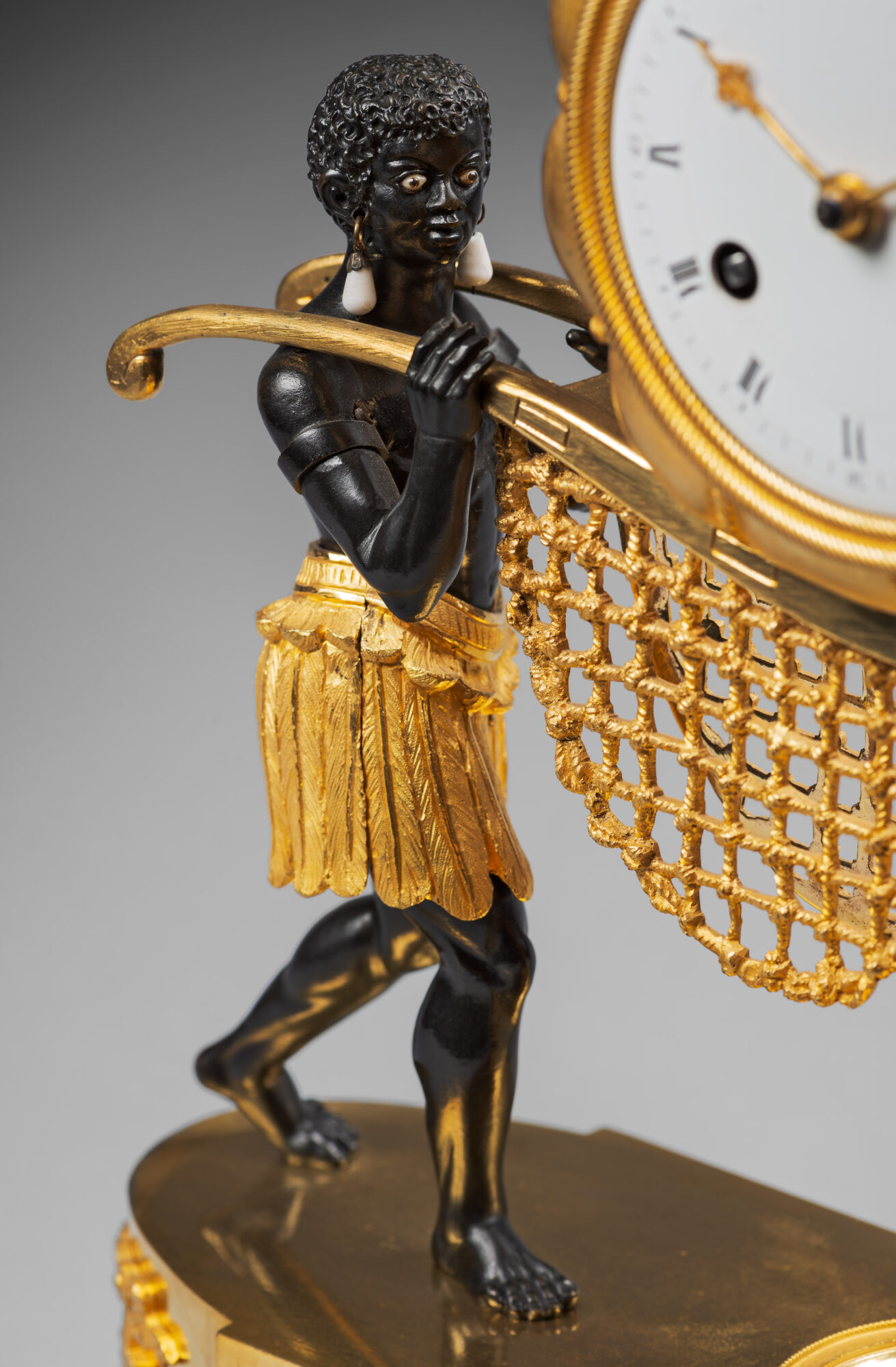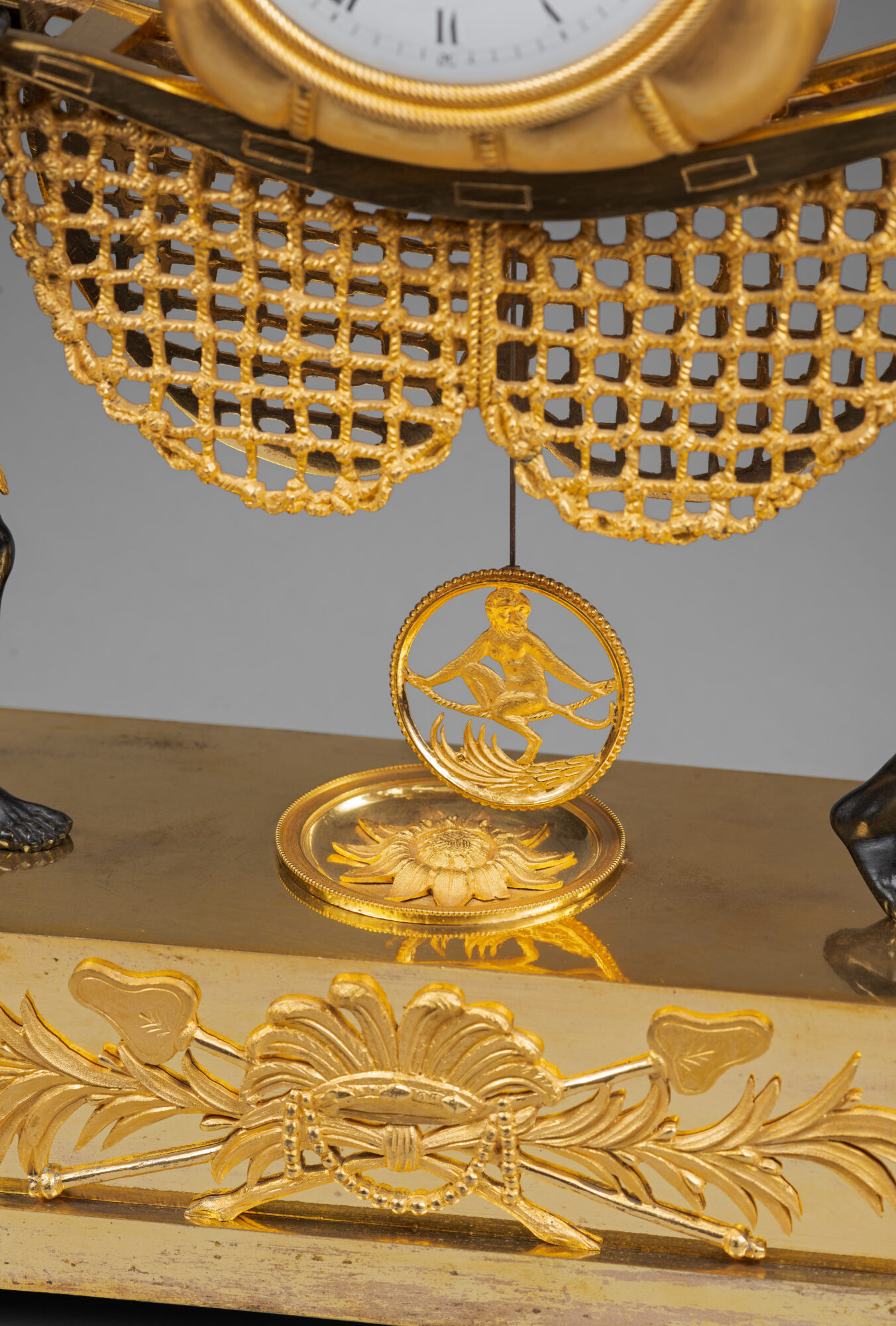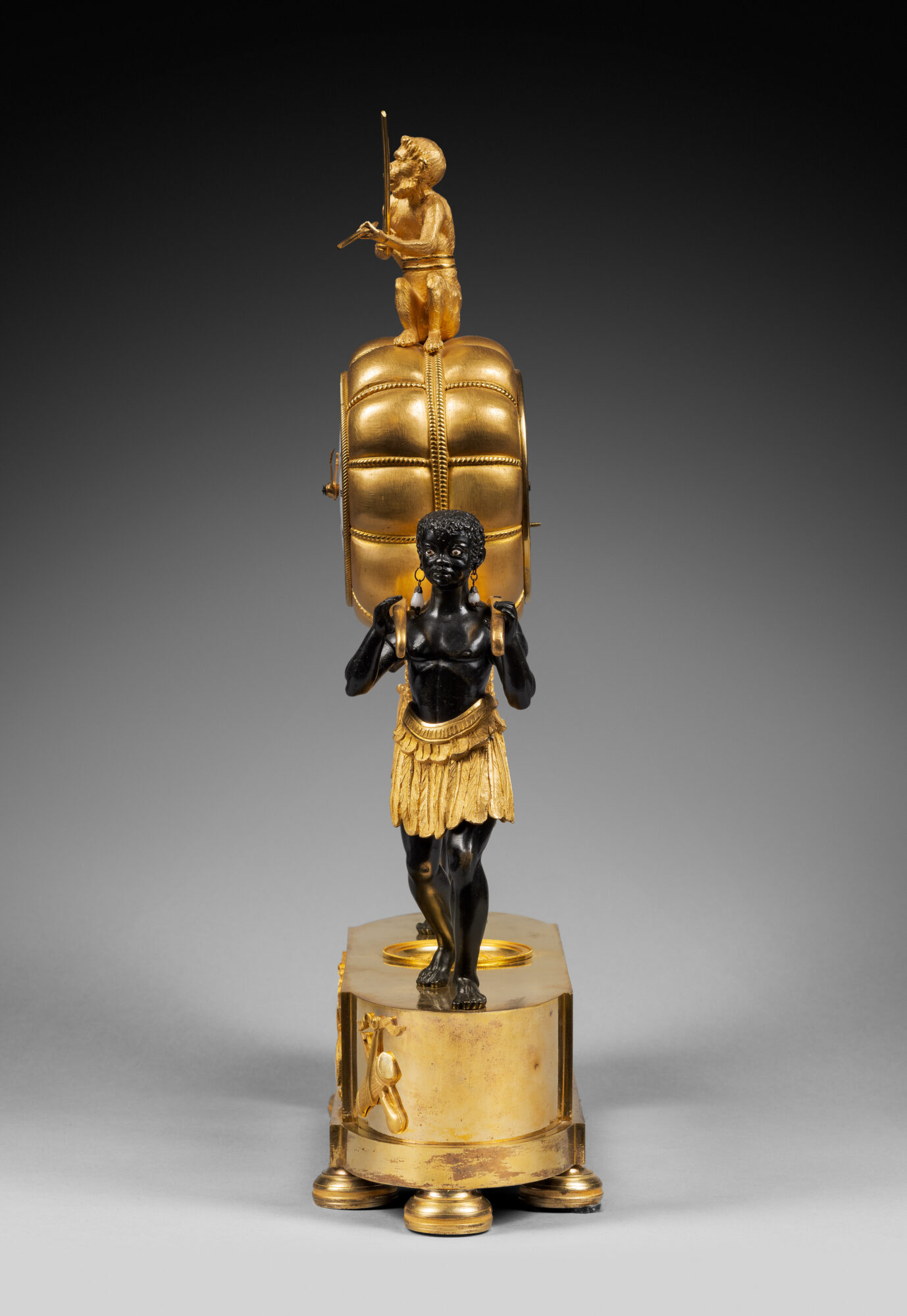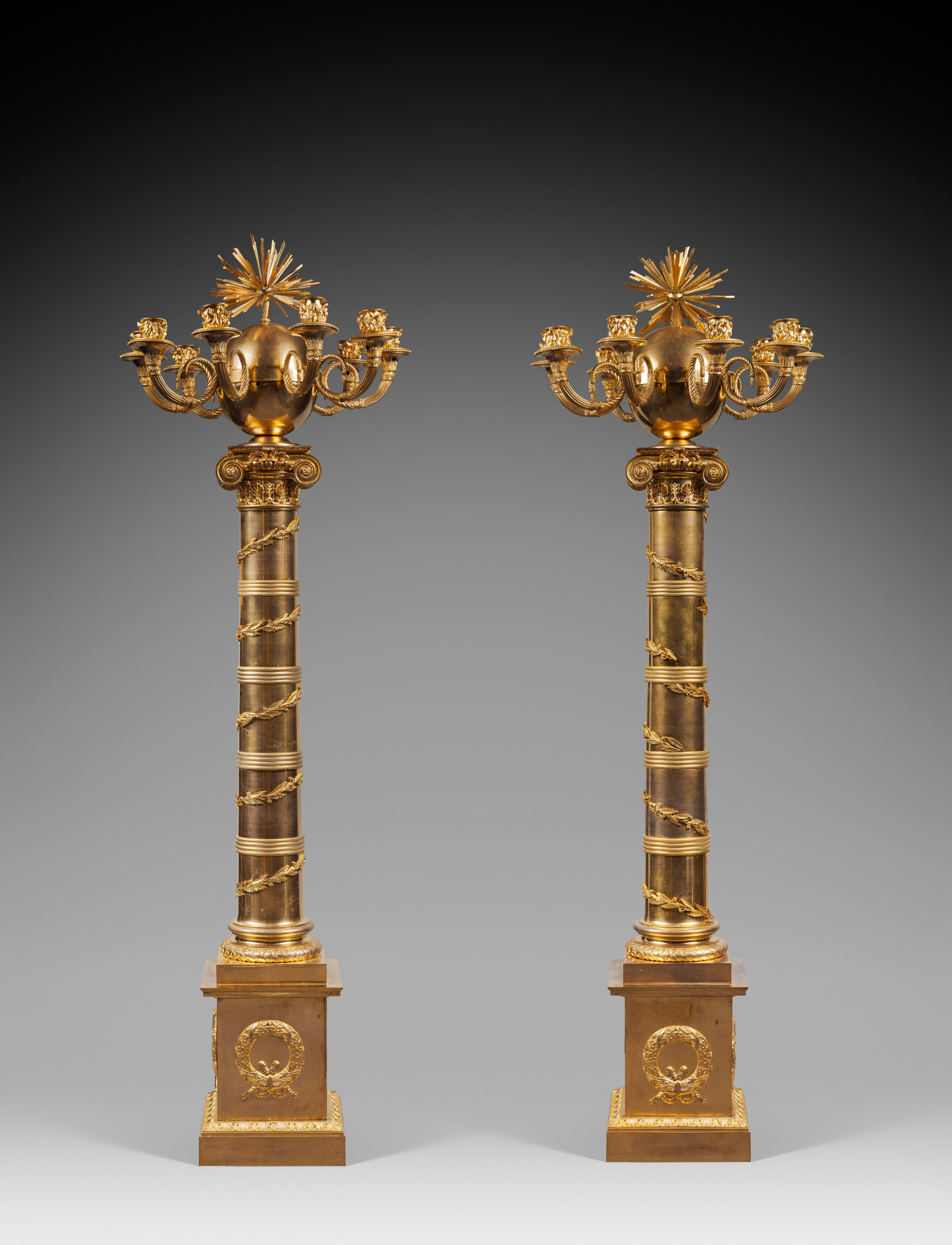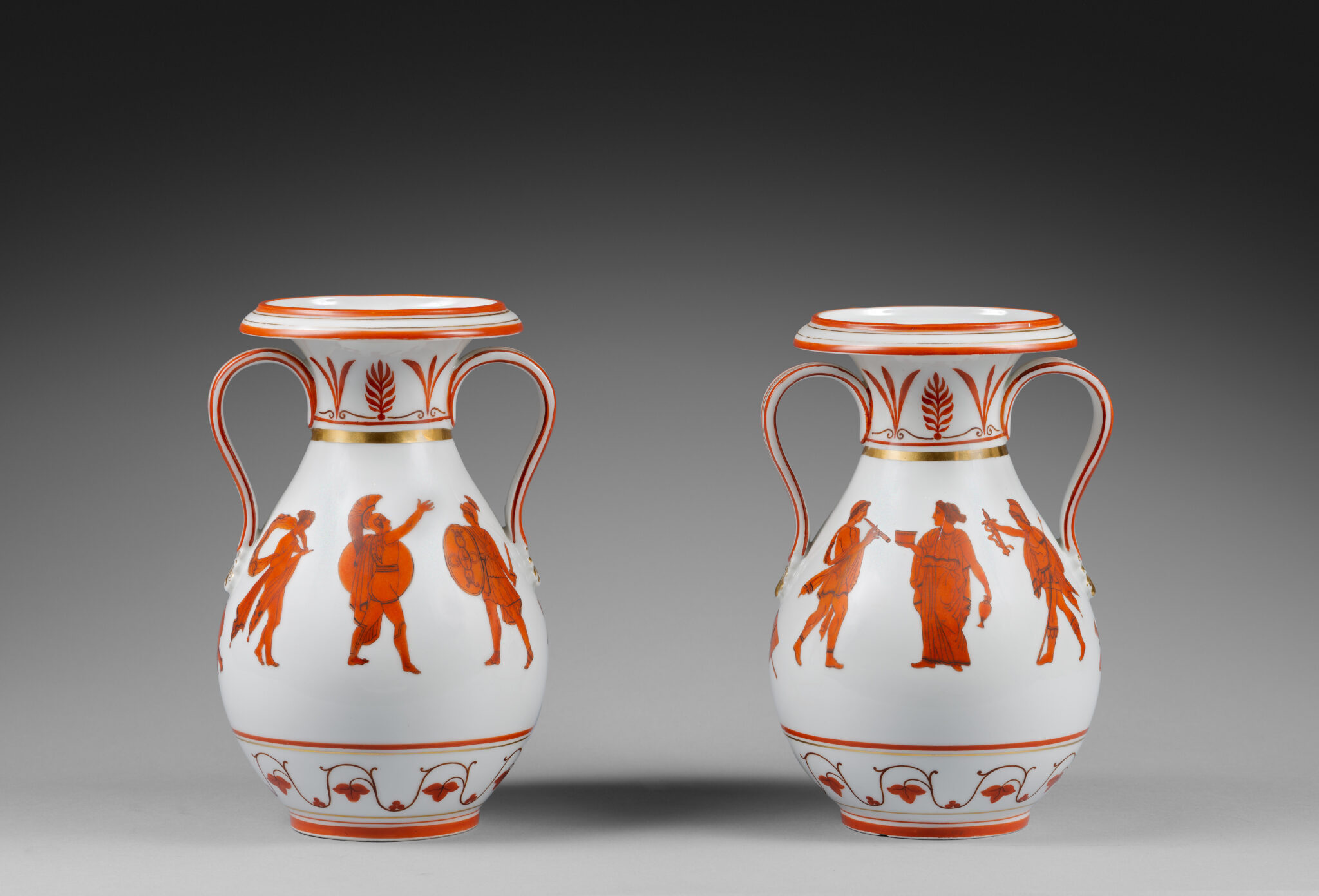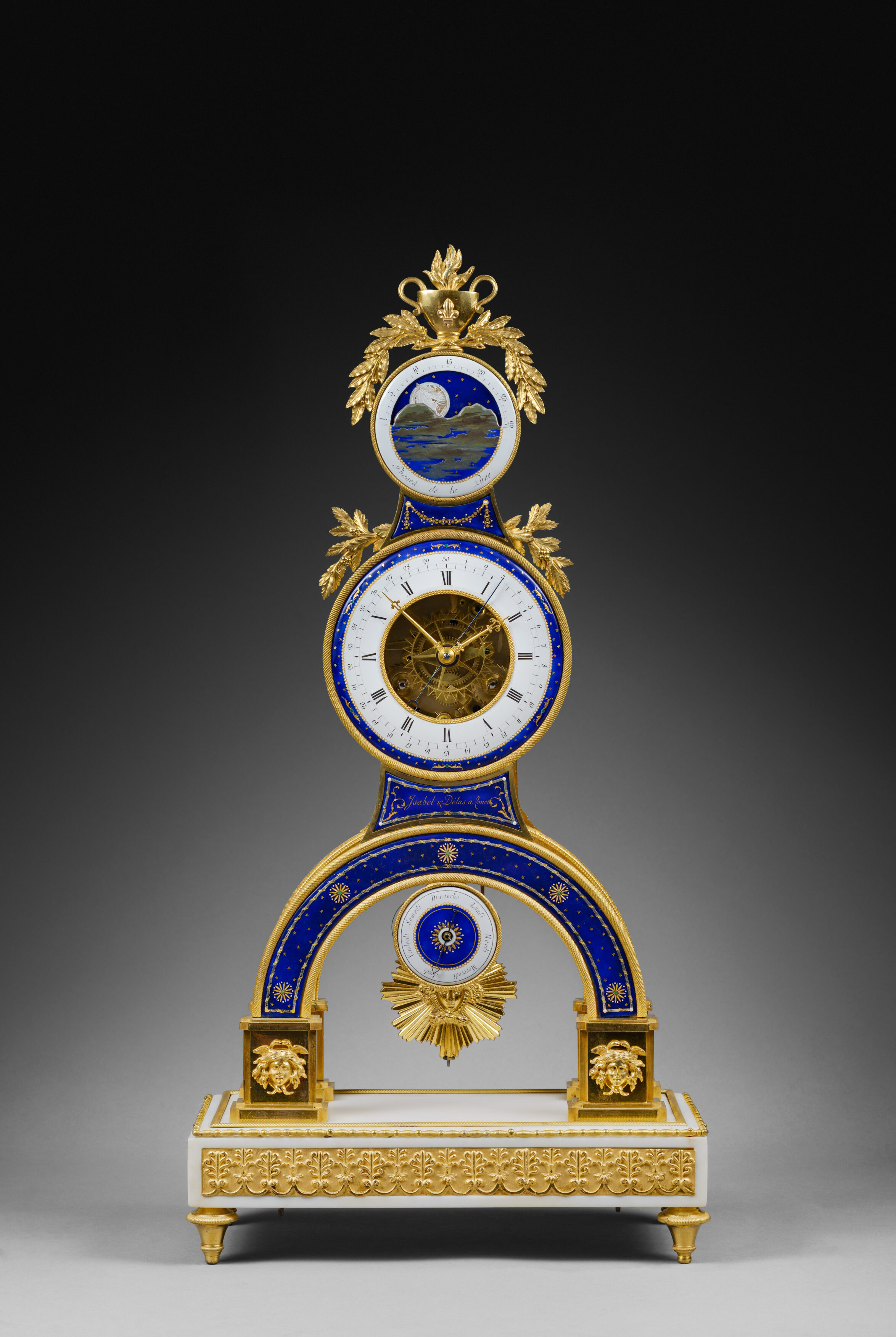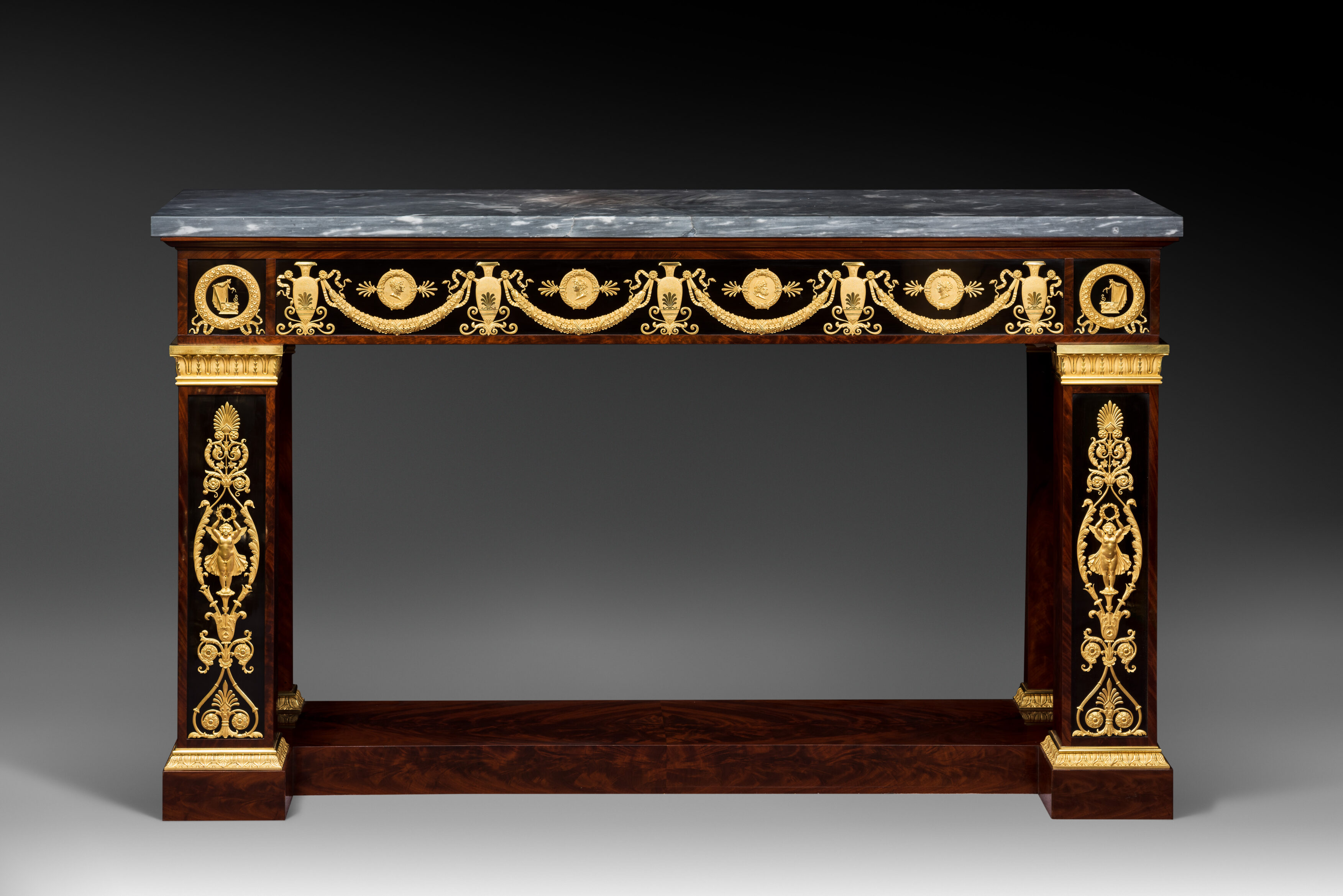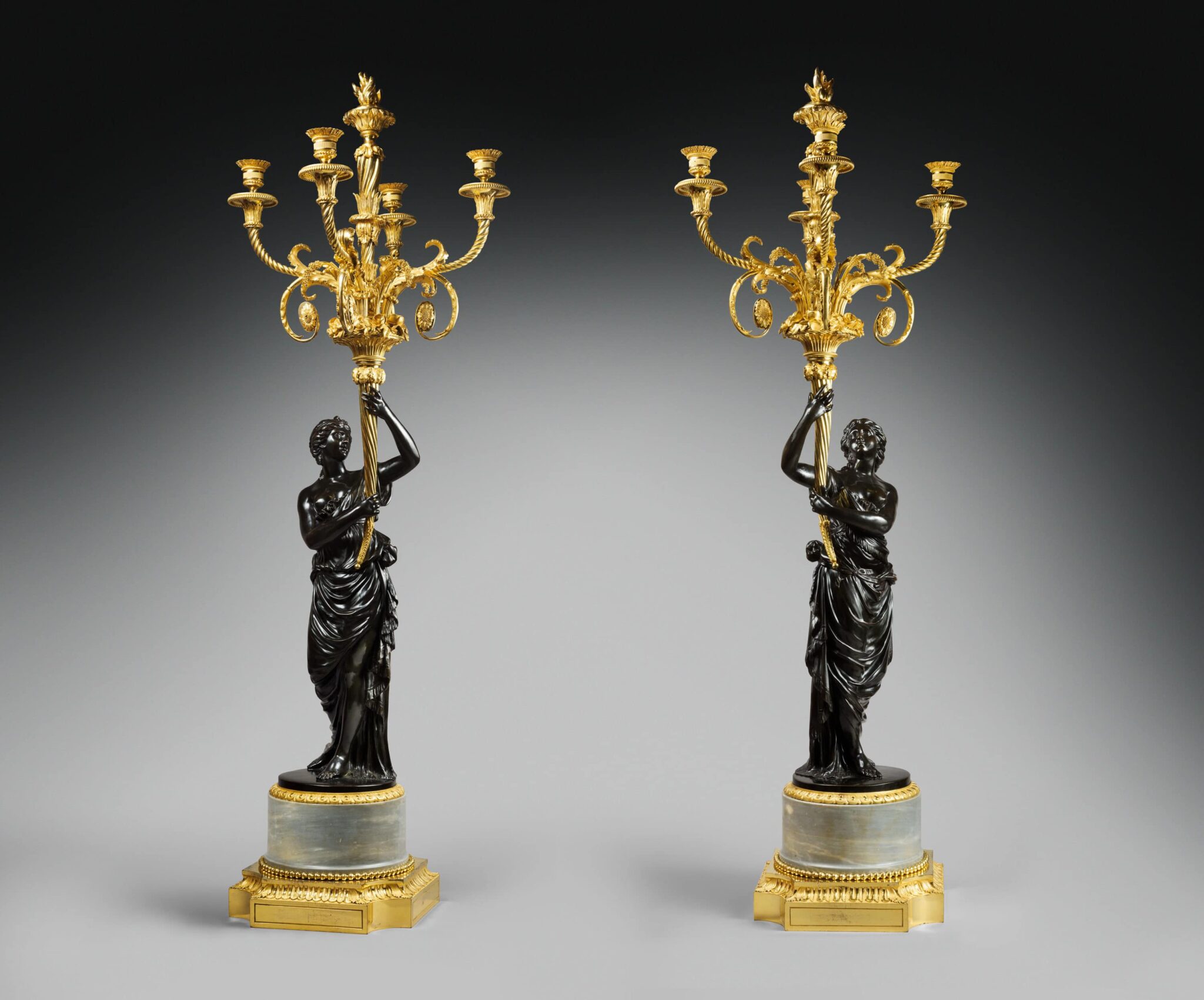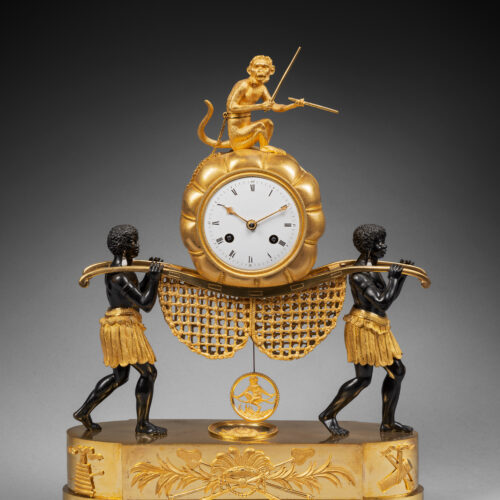Rare Gilt and Patinated Bronze Mantel Clock
“The Stretcher Bearers”
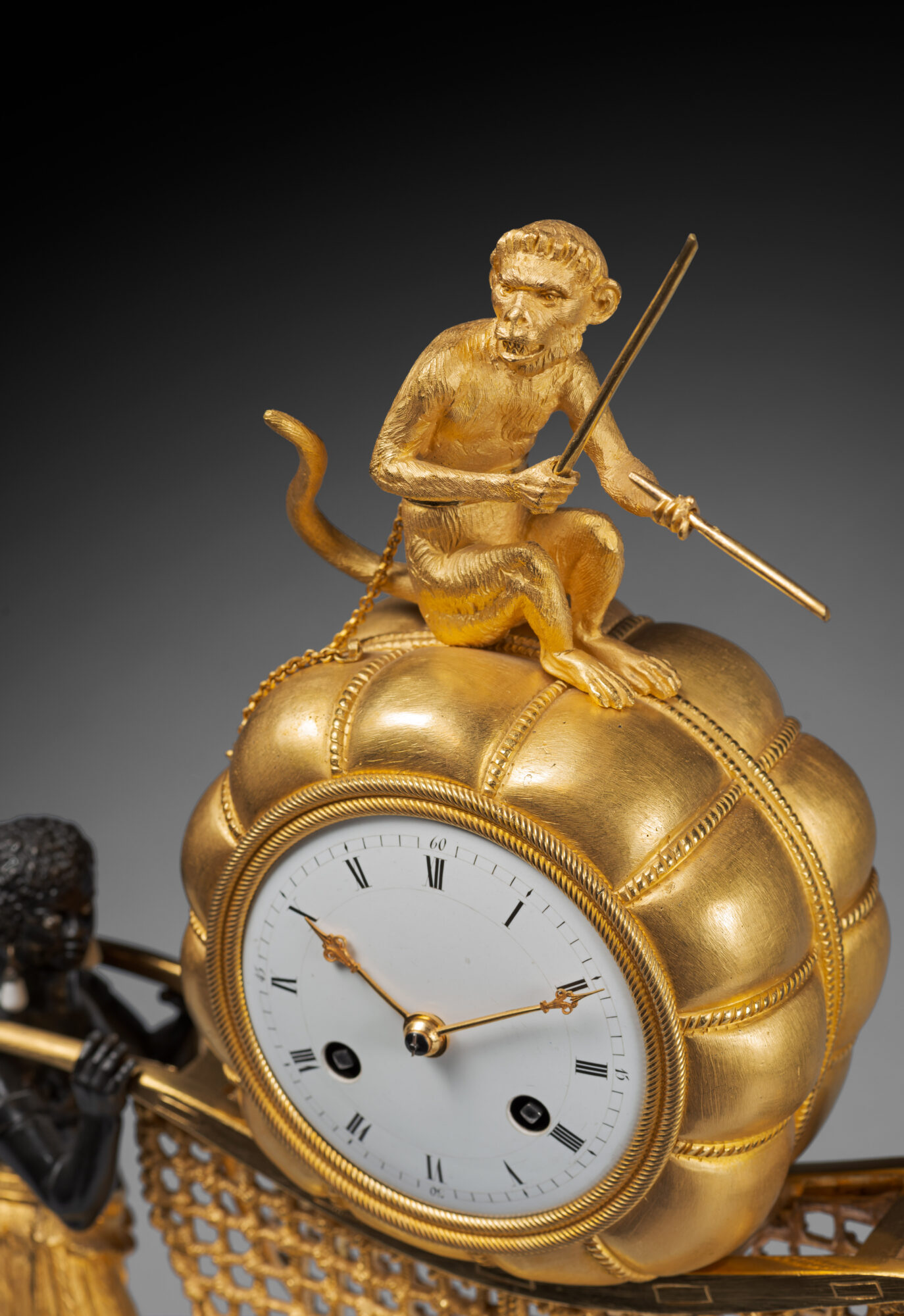
Case Attributed to Parisian Bronze Caster Louis-Isidore Choiselat, known as Choiselat-Gallien (1784-1853)
Paris, late Empire period, circa 1815
Bibliography:
Dominique and Chantal Fléchon, “La pendule au nègre”, in Bulletin de l’association nationale des collectionneurs et amateurs d’horlogerie ancienne, Spring 1992, n° 63, p. 27-49.
The round white enamel dial indicates the Roman numeral hours and the Arabic fifteen-minute numerals by means of two pierced gilt bronze hands. It is set within a bale of cotton that is tied with cords and is surmounted by a seated and chained monkey musician that holds a cane with a spherical head in each hand. The bale of cotton, with a net suspended from it, is placed on a stretcher behind which hangs the pendulum. The pendulum terminates in a medallion that is pierced with the motif of a female monkey balancing on a rope. The stretcher rests on the shoulders of two fine figures representing young black men with enamel eyes and hoop earrings, who are wearing feather loincloths. The figures stand on a quadrangular base with canted corners, which is adorned with applied motifs representing xylophones hung from ribbons and a trophy featuring a headdress made of feathers, palmettes and crossed oars. The clock is raised upon six flattened knurled feet.
Discover our entire collection of antique mantel clocks for sale online or at the gallery.
La Pendulerie is the specialist in fine and rare antique clocks, based in Paris.
During the late 18th century siècle the interest in exoticism grew, influenced by the philosophical writings of Jean-Jacques Rousseau, who extolled the moral virtues of the return to Nature, through the myth of the “noble savage”. The fascination with exotic subjects was also conveyed by contemporary literature. The extraordinary literary success in 1788 of Bernardin de Saint-Pierre’s “Paul et Virginie”, which echoed Daniel Defoe’s “Robinson Crusoé”, the novel “Les Incas” by Marmontel, which was published during the American war of independence, and Chateaubriand’s “Atala”, which was published in 1801, all profoundly changed Europeans’ approach to other civilizations, encouraging an intense nostalgia that was related to the quest for a pagan paradise that was sublimated by Christianity. As was often the case in the French decorative arts, this philosophical and literary movement was manifested in certain artistic creations, including clocks and lighting instruments. The present clock was created within this context. Its model is one of the rarest of the type of the clock known as “pendule au nègre”.
Among the rare similar clocks known, featuring variations in their design, one example, surmounted by a group depicting Paul and Virginie, is in the Duesberg Museum in Mons (see the exhibition catalogue “De Noir et d’Or, Pendules au bon sauvage”, Musées Royaux d’Art et d’Histoire, Bruxelles, 1993). A second example, identical to the present clock, is illustrated in P. Kjellberg, Encyclopédie de la pendule française du Moyen Age à nos jours, Paris, 1997, p. 344 . One further example, made by the bronzier Louis-Isidore Choiselat, known as Choiselat-Gallien, is illustrated in H. Ottomeyer and P. Pröschel, Vergoldete Bronzen, Die Bronzearbeiten des Spätbarock und Klassizismus, Band I, Munich, 1986, p. 379, fig. 5.15.20. This allows us to attribute the present clock to the important Empire bronzier Choiselat-Gallien.
